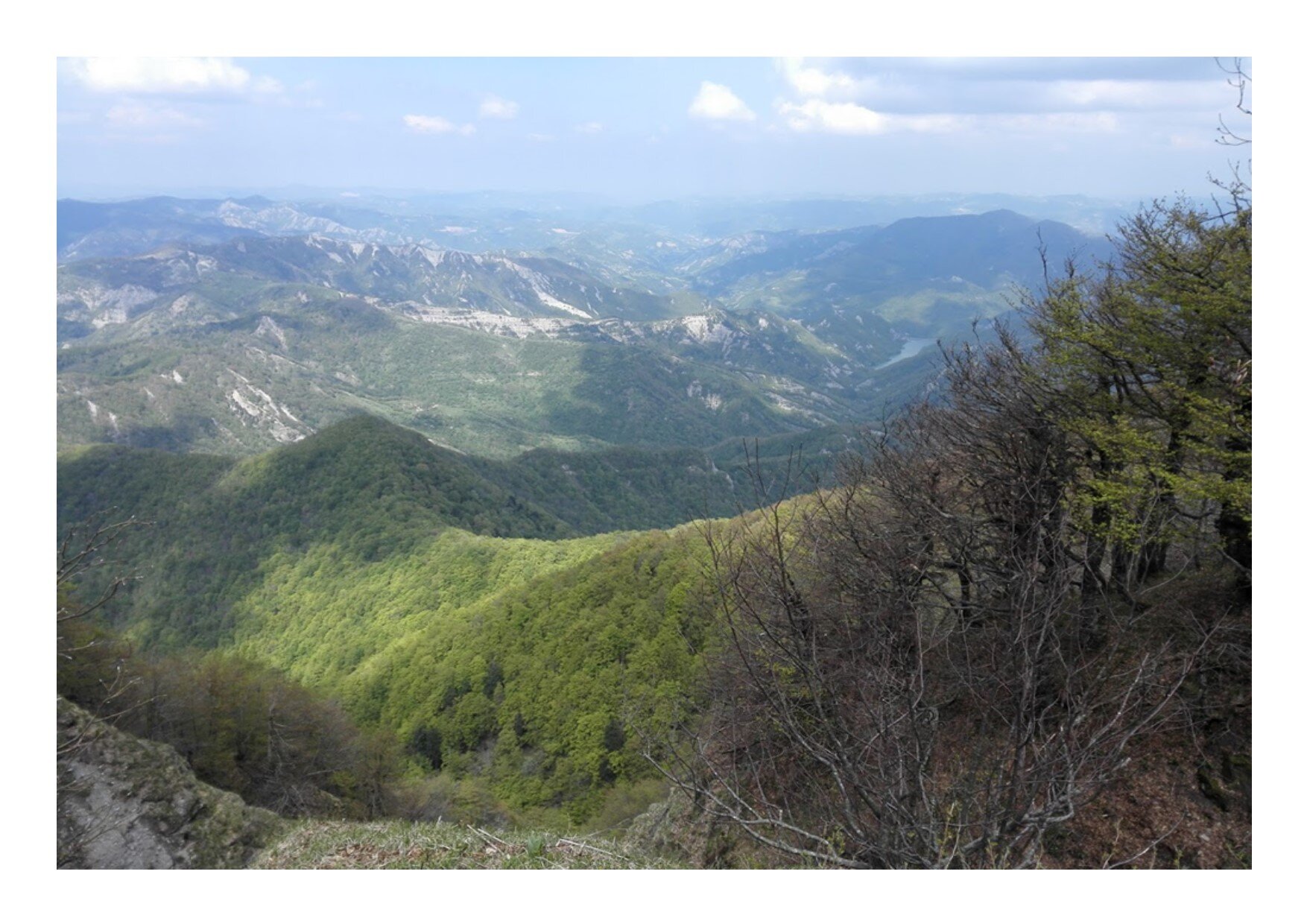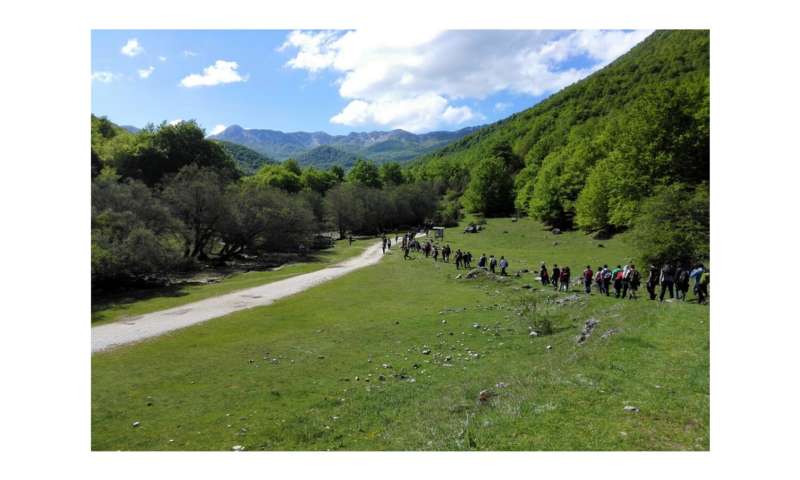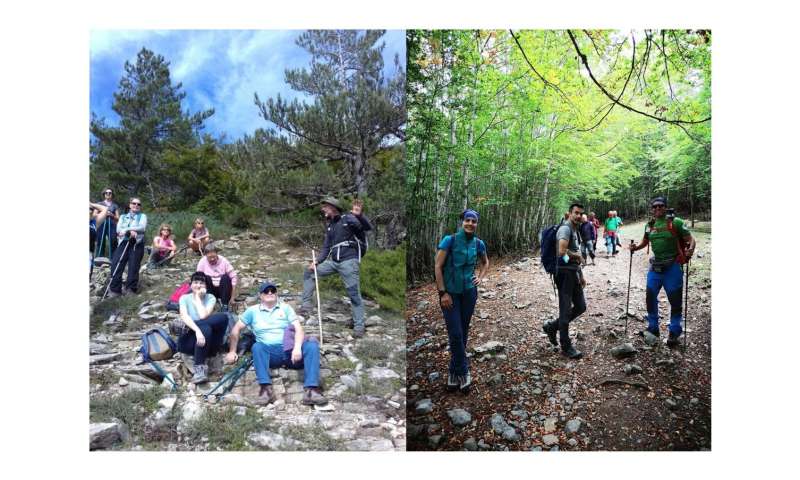#Hiking guides as a bridge leading to increased tourism sustainability in protected areas

“#Hiking guides as a bridge leading to increased tourism sustainability in protected areas”

A multidisciplinary survey focusing on the role ecotourism has in sustainable development, led by the University of Tuscia (Viterbo, Italy) and published in Ecology and Society, reveals the great potential that hiking guides have in conveying principles of sustainability to tourists. The study highlights the main goals of sustainable development in four major national parks in the Apennines (Italy), with a special emphasis on low ecological footprint tourism practices and conservation messaging.
The survey reveals that today, sustainability goals represent a widely held cultural norm among hiking guides, who recognize the need for up-to-date knowledge and skills relating to specific sustainability targets, especially those concerning communication messaging. Therefore, as a future strategy, hiking guides should be provided with the sufficient knowledge and ability to communicate natural landscape dynamics involving old-growth forests, leading to diffuse ecofriendly solutions aimed at reducing tourist impact on the environment.
Ecotourism: a unique opportunity for achieving Agenda 2030 goals in protected areas
Ecotourism represents an ideal opportunity for sustainable development in protected areas. This applies especially to national parks located in marginal and remote inland zones characterized by high unemployment and resulting depopulation, such as the national parks in the Apennines. In this context, tourism represents a key element for the local economy. “Nowadays, national parks are successful tourist destinations; however, the dichotomy between their two main aims—biodiversity conservation and the enjoyment of natural resources by visitors—is increasing” says Sonia Ferrari, Professor of Tourism Marketing at the University of Calabria. An increased influx of tourists carries with it several negative effects on the natural heritage, mainly as a result of the ecological footprint of people visiting small towns surrounded by “intact,” but fragile ecosystems.
Ecotourism and nature-based tourism are often confused, but are, in practice, two radically different forms of tourism. As Jordan Palli, Ph.D. student from University of Tuscia (Italy), explains “Nature-based tourism relates to the enjoyment of nature in various forms, while ecotourism rather implies minimal negative environmental impacts, positive socio-economic effects while allowing for the even distribution of its benefits among the main stakeholders.” Nature often pays the price when there is a massive presence of people in a natural context. Such a negative ecological footprint should, therefore, be addressed by Park managers.

The questionnaire-based study, led by the University of Tuscia, shows that most of the hiking guides from four national parks in the Apennines (Foreste Casentinesi NP, Abruzzo Lazio and Molise NP, Pollino NP and Aspromonte NP) are very sensitive towards the theme of sustainability. Since these professional guides are the link between tourists and Park managers, they represent extremely important stakeholders in national parks. “Our study highlights how hiking guides, being at the interface between tourists and Park managers, could convey conservation and sustainability principles to tourists. For example, they can explain the role of old-growth forests and of the rewilding process in conservation biology. At the same time they can promote sustainable tourism practices such as linking agro-environmental measures for the production of food by local communities to consumption by ecotourists,” says Gianluca Piovesan, coordinator of the Italian Mountain Lab research project at the University of Tuscia. Such a green communication network would substantially help in lowering tourists’ ecological footprint and even contribute to park strategies for nature conservation.
Cinzia Franceschini, Ph.D. in statistics working at Tuscia University, also notes the fundamental contribution of statistical methods in identifying both shared traits and differences among the investigated guides. The exploratory research applied through multistep multivariate statistical techniques represents a new way to investigate responses to questionnaires and to get feedback and tips which can then be used by decision-makers. “We hope this work will pave the way towards using statistics when investigating the progress of tourism sustainability in protected areas,” says the researcher.
A key strategy for nature protection: lifelong training of hiking guides
Hiking guides are key agents in promoting sustainable tourism in natural protected areas. However, the study reveals that the role of forest protection and landscape rewilding in biodiversity conservation and carbon mitigation strategies deserves further attention. Park managers should therefore invest more resources in providing lifelong training for guides in conservation messaging, giving them up-to-date knowledge on significant environmental issues that are emerging globally (see the recent Ipbes report: https://ipbes.net/global-assessment).
“Our survey reveals interesting feedback about the scientific knowledge of hiking guides currently operating within the four major Apennine national parks. For example, 68% consider rewilding as a positive process while only 4% view it negatively. The meaning of rewilding in sustainable development should be better explained to members of the public. Hence, well-trained hiking guides could represent a strategic bridge between biology conservation targets and society engagement,” explains Gianluca Piovesan.
“Moreover, the majority of hiking guides (91%) is aware that old-growth beech forests within their national parks are part of the UNESCO World Heritage Serial Site; just over half of them (54%) considers forest cutting as a negative practice for forest ecosystem functioning in protected areas. These results highlight a widespread awareness of the importance of preserving forest integrity and natural dynamics,” adds Jordan Palli.
In any case, the study underlines the importance of revising the hiking guide accreditation system, which should include specific training on wilderness and conservation messaging, along with a lifelong learning program to ensure hiking guides are equipped with up-to-date knowledge on environmentally significant issues such as biodiversity conservation and carbon mitigation strategies.

Towards the development of sustainable tourism in protected areas
One of the interesting results the research illustrates is the key role of certification standards in driving territorial marketing strategies aimed at safeguarding the environment and increasing local sustainability. “Analysis reveals that landscape and nature represent essential factors contributing to ecotourists’ choices,” says Stefano Poponi, collaborator in the Italian Mountain Lab project. International standards, such as Emas, ISO 9001, ISO 14001, as well as ecological labels (Ecolabel, first of all) can all help to improve overall environmental performance of the ecotourism system. Therefore, a shared strategy is needed at a National and Regional level to foster and support local economies, promoting new travel experiences with low environmental impact and integrated management certification based on socio-economic and environmental indicators. “However, much remains to be done in this direction” says Stefano Poponi.
“In a more general view, the transition to the circular economy implies a radical change of traditional business paradigms,” says Alessandro Ruggieri, professor of resources, waste and environmental certification, former rector of the University of Tuscia. “Today, we need to move to a sustainable, digital 4.0 tourism aimed at valorizing cultural and natural heritages. The challenge is to include all the players in the tourism chain in this transition, including the most isolated and economically weaker realities.”
This research invites us all to reflect on the role of local stakeholders and policymakers play in defining new sustainable development strategies involving the ecotourism complex. Assigning hiking guides an active part in the communication process, so as to effectively include them in park management plans, would make a substantial contribution towards reducing the ecological footprint of tourists, thus contributing to the protection of the planet’s natural heritage.
Nature conservation and tourism can coexist despite conflicts
Stefano Poponi et al. Toward the development of sustainable ecotourism in Italian national parks of the Apennines: insights from hiking guides, Ecology and Society (2020). DOI: 10.5751/ES-11996-250446
Citation:
Hiking guides as a bridge leading to increased tourism sustainability in protected areas (2020, December 24)
retrieved 24 December 2020
from https://phys.org/news/2020-12-hiking-bridge-tourism-sustainability-areas.html
This document is subject to copyright. Apart from any fair dealing for the purpose of private study or research, no
part may be reproduced without the written permission. The content is provided for information purposes only.
If you liked the article, do not forget to share it with your friends. Follow us on Google News too, click on the star and choose us from your favorites.
For forums sites go to Forum.BuradaBiliyorum.Com
If you want to read more Like this articles, you can visit our Science category.



